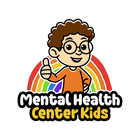|
Key Takeaways:
- Using “I” statements is an effective way to improve your child’s communication with others, as it focuses on their feelings and connects to an issue.
- Children can use “I” statements to set boundaries, make a simple request, express their feelings, or self-reflect.
- Kids can start formulating “I” sentences by stating their feelings, explaining the issue, and offering a possible solution.
|
When kids experience big emotions like anger and frustration, they may struggle to find the right words to express themselves. They might blame others and become argumentative, so practicing “I” statements for kids can help them communicate with others in an empathetic and healthy way.
Learn how “I” statements work and how children can use them to discuss difficult emotions with others.
What are “I” Statements?
“I” statements are communication tools used to express personal thoughts, feelings, and needs. They begin with “I” and refer to how the speaker is feeling about a particular situation.
Because they focus on the speaker’s perspective, they reduce the likelihood of becoming defensive or sounding accusatory [*].
What’s the difference between an “I” Statement and a “You” Statement?
While “I” statements focus on the speaker’s emotions, “you” statements blame the other person. The latter implies criticism. For example, a person might say, “You’re always late,” or “You’re so unreliable.” “You” statements can be hostile and keep kids from resolving their problems.
Parts of an “I” Statement
“I” statements typically have three components:
-
The feeling: “I” statements often begin with a feeling. For example, a child might say, “I feel frustrated/upset/confused” to express their internal experiences.
-
The specific situation: Here, the child will describe the particular event or behavior that made them feel a certain way. Encourage them to be exact and focus on observable actions, not assumptions.
-
The effects or needs: Finally, the child will explain the impact of the situation. They’ll state what they need to alleviate their concerns. Doing so helps the other person understand the consequences of their words or behaviors.
Benefits of “I” Statements for Kids
“I” statements can help another person understand and receive your message. When teaching children how to use “I” statements, underscore their benefits:
-
Better conflict resolution: “I” statements provide an excellent way to resolve issues without either party becoming defensive. It removes the focus from assigning blame and shifts it to resolving the problem. “I” statements reinforce the norm of reciprocity, as they encourage others to reciprocate and communicate instead of becoming argumentative [*].
-
More constructive feedback: Because “I” statements don’t lead with criticism, they can be a helpful way to provide feedback. “I” statements help both parties focus on the conversation and make them more open to making changes by increasing empathy.
-
Enhanced assertiveness: When children use “I” statements, they learn to become more assertive. They can express control and ownership of their emotions without making the other person feel guilty or blamed.
Examples of “I” Statements
Using “I” statements can help children express themselves constructively, set boundaries respectfully, and assert themselves in a kind way. Here’s how:
-
For setting boundaries: “I don’t like it when you use my toys without asking. I’d like you to ask me first.” “I feel upset when you interrupt me. Please let me finish speaking first.”
-
For expressing emotions: “I feel sad when I don’t spend enough time with my friends.” “I feel happy when you play board games with me.”
-
For resolving conflicts: “I feel angry when you tease me.” “I feel left out when you whisper secrets to our friends.”
-
For making requests: “I feel tired. Can I take a nap?” “I’m pretty hungry. Can we go get a snack?”
-
For self-reflection: “I feel proud when I finish my homework on time and get a good grade.” “I feel disappointed when I forget to do my chores.”
How to Formulate “I” Statements
“I” statements don’t always begin with “I feel,” and there are several ways to use them. Here are the steps to help your child formulate an “I” statement.
State your feelings
Encourage your child to discuss their feelings first, starting with the statement, “I feel.” Children may be tempted to place blame on others and say things like “You made me mad,” which can make the other person feel defensive.
By starting with “I feel,” your child can communicate more effectively, and the other person can listen and respond with an open mind.
Connect the feeling to an issue
The second stage of formulating an “I” statement involves linking it to an issue. Why does your child feel a certain way? What led them here?
Your child might say, “I feel hurt when you make fun of my braces.” While they’re referencing the other person’s behavior, the statement still focuses on their feelings. Explaining why you feel a certain way encourages the other person to reflect on their actions and focus on alleviating discomfort, rather than becoming defensive.
Propose a resolution
Finally, it’s time to collaborate on a solution. Once your child expresses how they feel, it can lead to what they need from the other person. For instance, they might say, “I feel hurt when you make fun of my braces. Could you please not joke about it?”
Providing a solution can make the other person more amicable to relieving any uncomfortable feelings and focusing on a discussion or compromise.
How to Teach “I” Statements to Kids
Teaching kids how to use “I” statements involves more than just explaining what they are. You must give your child opportunities to practice crafting “I” statements. Here’s what you can do:
-
Use visual aids: If your child is a visual learner, using visual aids like fill-in-the-blanks worksheets or sentence starters can help kids structure their “I” statements.
-
Role-play: Some children may need help understanding when it’s appropriate to use “I” statements. When this is the case, you can role-play real-life scenarios, such as arguing with a classmate or not sharing toys.
-
Provide feedback: Your child may not know whether they are using “I” statements correctly, so provide feedback when you can. Praise them for their efforts and help them rephrase their sentences if necessary.
-
Model using “I” statements at home: The more you use “I” statements at home, the more familiar they will be to your child. For example, if you see that your child hasn’t cleaned up their room, you can tell them, “I get frustrated when you leave your things all over the floor. Could you pack them away when you’re done using them?”
At What Age Can Kids Start Learning “I” Statements?
Children can start learning “I” statements as early as 18 months, when they begin to identify themselves. At this age, they understand that they are a separate entity from their ideas and other objects.
By the time they are two years old, toddlers can start stringing sentences together to refer to their own actions. For example, they might use simple phrases like “I want food,” or “I’m tired.”
At this stage, often called “budding morality,” children start developing a sense of empathy and can distinguish between right and wrong, which lays the groundwork for improving their communication skills [*].
The Bottom Line
“I” statements for kids provide an excellent way to de-escalate high-emotion situations and communicate needs. While there’s no guarantee the other person will respond politely or with kindness, using “I” statements lowers the chances of triggering defensiveness or arguments.
Encourage your child to continue developing their communication skills with our social skills worksheets.
Sources:
- Rogers SL, Howieson J, Neame C. “I understand you feel that way, but I feel this way: the benefits of I-language and communicating perspective during conflict.” PeerJ, 2018.
- Mahmoodi A, Bahrami B, Mehring C. “Reciprocity of social influence.” Nature Communications, 2018.
- “An Overview of Moral Development and Moral Education.” Archive.org, 2022.





















































